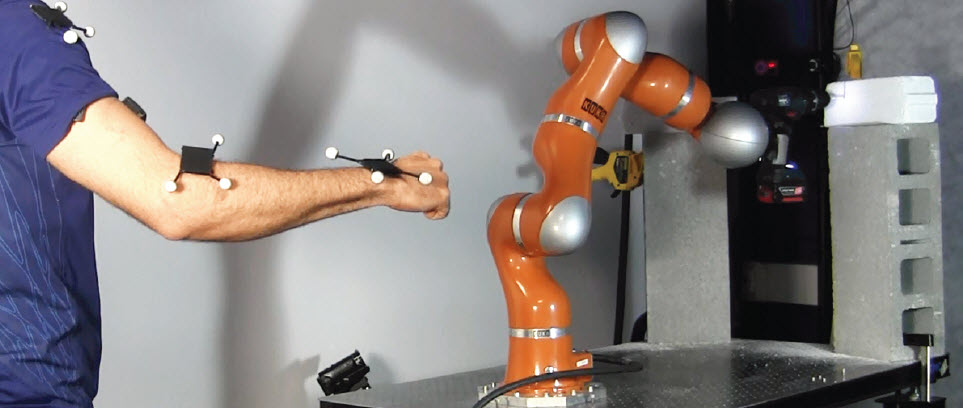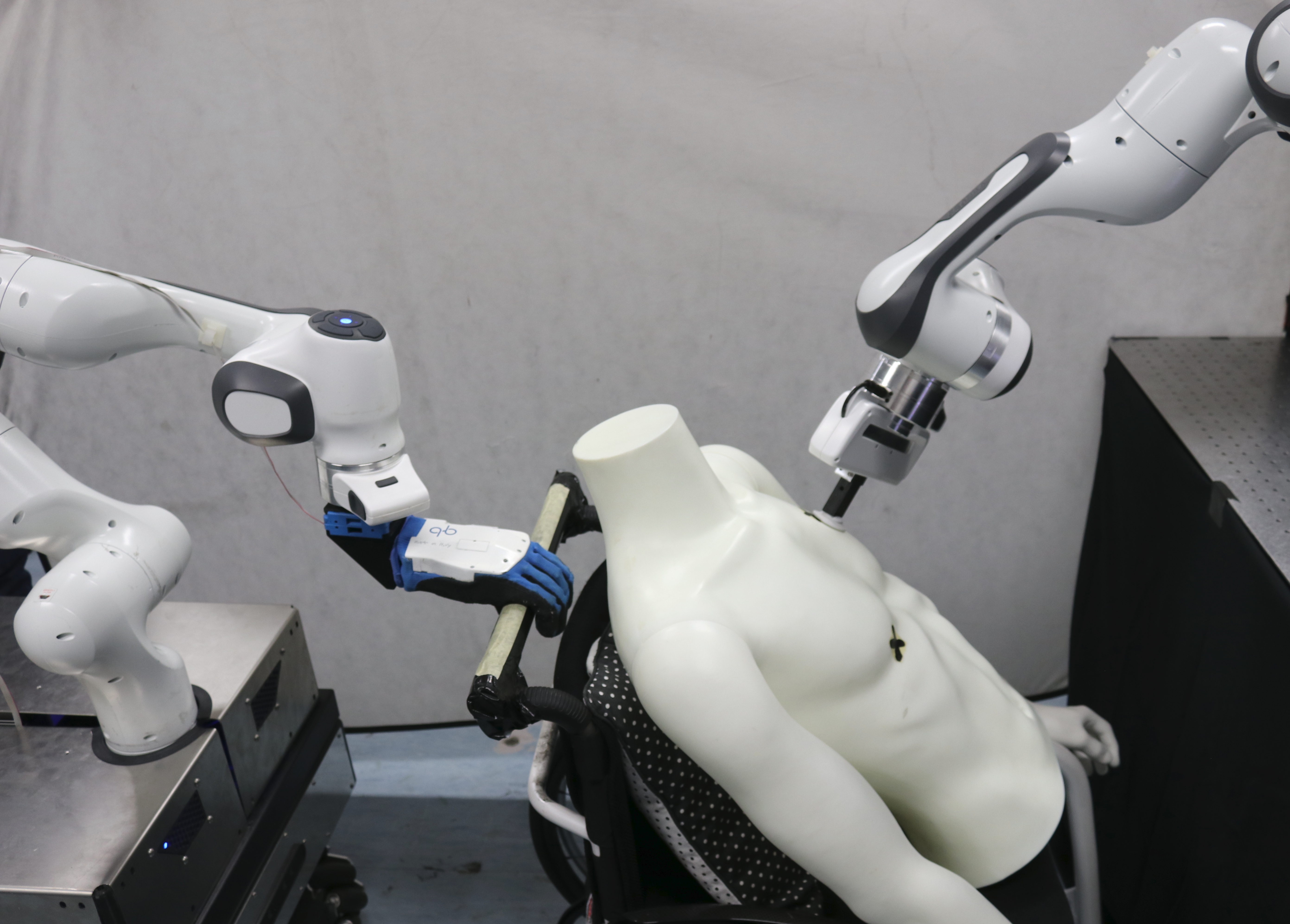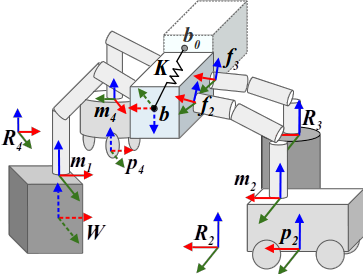The need to manipulate objects and tools in unstructured or hostile environments has led to the development of several Leader-Follower teleoperation interfaces: from the most basic, unilateral position-based, to bilateral force-reflecting systems. Notwithstanding the widespread use of such frameworks, they are known to lack substantial requirements to render an appropriate interaction performance (e.g. soft interactions in unilateral and stability in the latter). Therefore, the main objective of this theme is to address such limitations by the development of novel and intuitive interfaces for the execution of dynamic remote manipulation tasks. Our first objective is to extend the recent developments at HRI2 laboratory on the teleimpedance control of compliant robotic arms to a large number of degrees of freedom, e.g. humanoid robots.
Research activities in this field will additionally investigate the feasibility of merging our novel techniques in Body-Machine Interfaces (e.g. teleimpedance) and Brain-Machine Interfaces with force or wearable haptic feedback for improved stability and transparency.
On the robot side, we aim at integrating the underlying human motor control principles into the target robots’ control architectures to potentially improve interaction performance and redundancy resolution, while decreasing the robot control burden. The main research activities carried out in this direction, can be described as follows.


